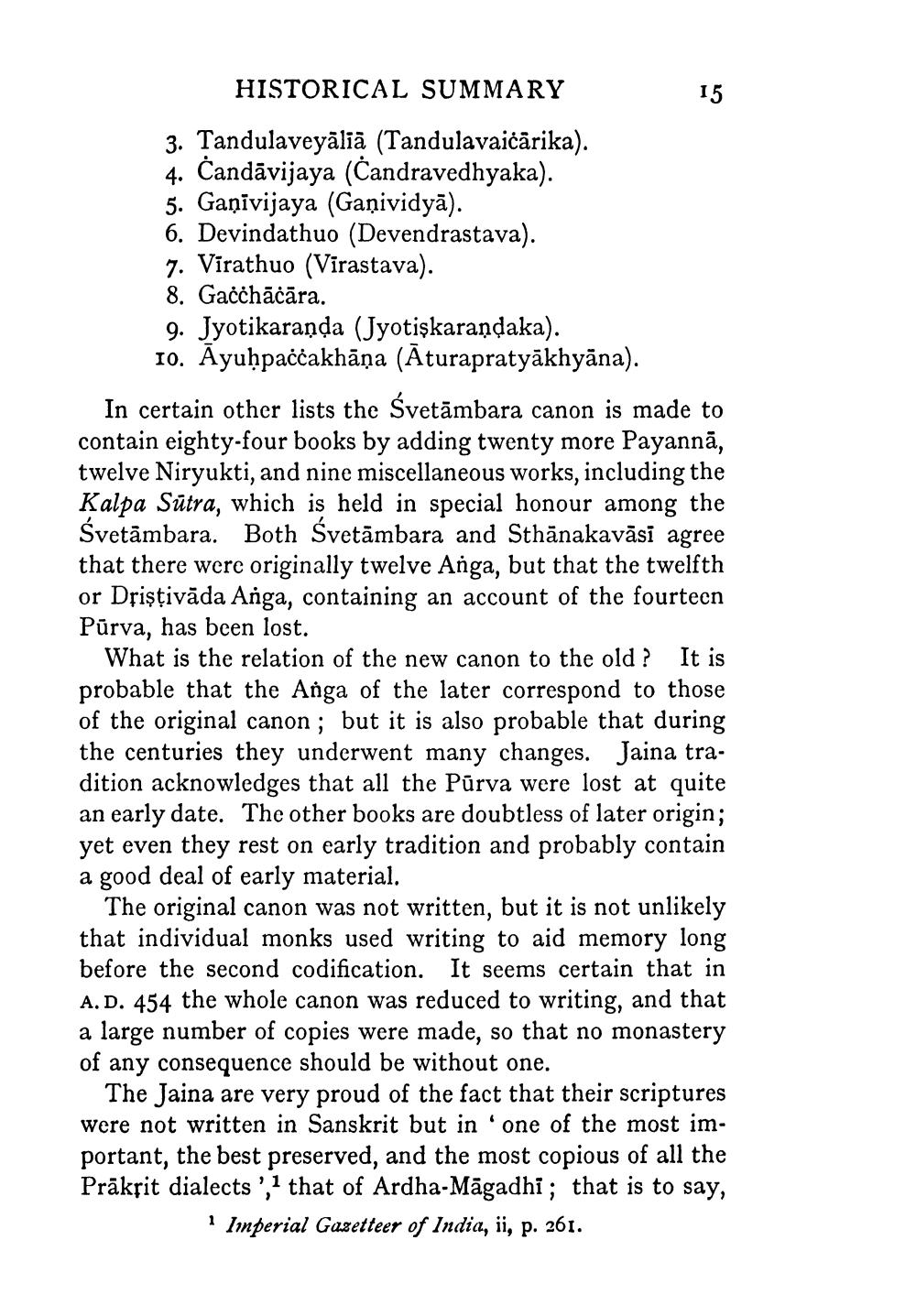________________
HISTORICAL SUMMARY
15
15 3. Tandulaveyālia (Tandulavaiċārika). 4. Candāvijaya (Candravedhyaka). 5. Ganivijaya (Gaņividyā). 6. Devindathuo (Devendrastava). 7. Virathuo (Virastava). 8. Gaċċhācāra. 9. Jyotikaranda (Jyotişkarandaka).
10. Ayuḥpaċċakhāņa (Aturapratyākhyāna). In certain other lists the Svetāmbara canon is made to contain eighty-four books by adding twenty more Payannā, twelve Niryukti, and nine miscellaneous works, including the Kalpa Sūtra, which is held in special honour among the Śvetāmbara. Both Śvetāmbara and Sthānakavāsi agree that there were originally twelve Anga, but that the twelfth or Driștivāda Anga, containing an account of the fourteen Pūrva, has been lost.
What is the relation of the new canon to the old ? It is probable that the Anga of the later correspond to those of the original canon ; but it is also probable that during the centuries they underwent many changes. Jaina tradition acknowledges that all the Pūrva were lost at quite an early date. The other books are doubtless of later origin; yet even they rest on early tradition and probably contain a good deal of early material.
The original canon was not written, but it is not unlikely that individual monks used writing to aid memory long before the second codification. It seems certain that in A. D. 454 the whole canon was reduced to writing, and that a large number of copies were made, so that no monastery of any consequence should be without one.
The Jaina are very proud of the fact that their scriptures were not written in Sanskrit but in one of the most important, the best preserved, and the most copious of all the Prākrit dialects ',1 that of Ardha-Māgadhi; that is to say,
Imperial Gazetteer of India, ii, p. 261.




